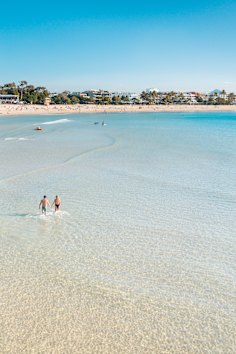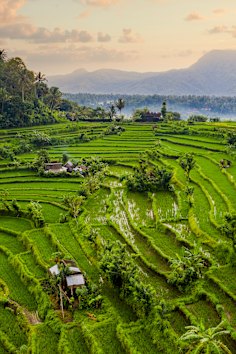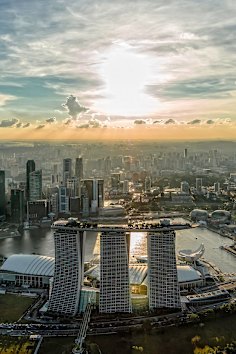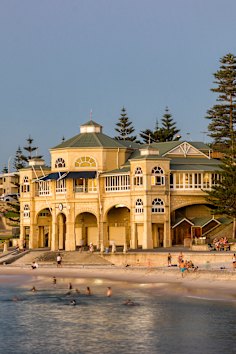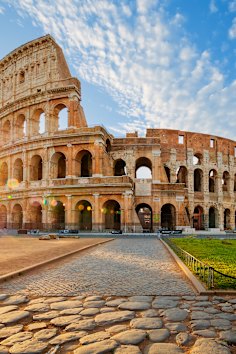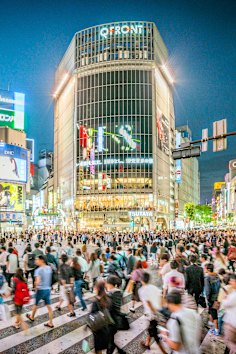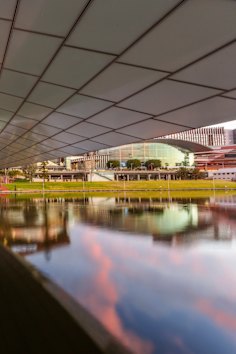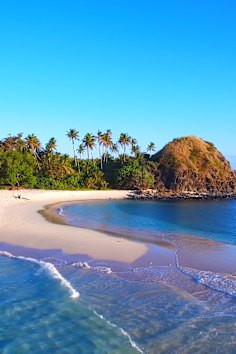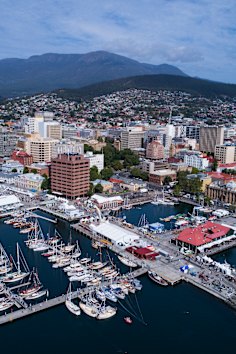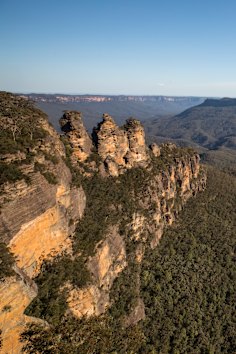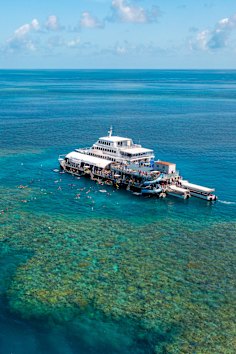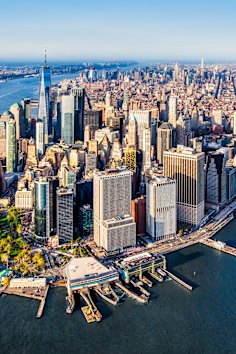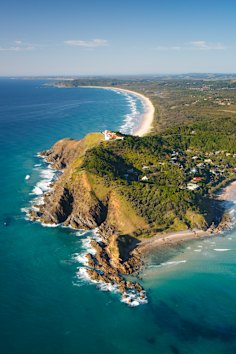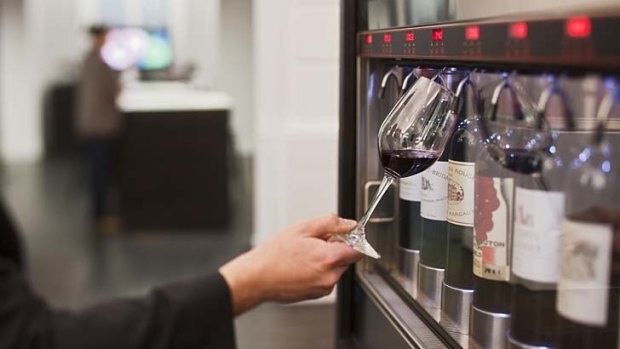
Vintage finds ... tasting at Max Bordeaux.Credit: AFP
At an 18th-century chateau, Leisa Tyler raises a glass of grand cru to the history and harvest of Bordeaux.
It's early evening and a warm yellow light is flooding the balcony of Chateau La Lagune, a handsome pile of 18th-century stone overlooking a freshly trimmed lawn lined with lavender in Haut-Medoc, a wine region outside Bordeaux.
It's harvest season and from my balcony chair I can see pickers filling the last of the day's baskets with bunches of plum blue cabernet sauvignon grapes. I hear footsteps inside the mansion - it's Martine, the house butler, wanting to know what type of wine I would like with the setting sun. Chateau La Lagune's dry, brawny 2008 red with its distinct dark-chocolate aroma, or the smoother, more peppery 2006? It's the most difficult decision I have had to make all day.
Not long after the 2006 vintage appears, another quandary presents itself. The in-house chef, Florian Lameul, would like to know if I fancy langoustine from the Brittany coast or lamb fattened on Pyrenees grass for dinner? I choose the lamb, which is served in the chateau's country-style basement dining room furnished with an old wrought-iron stove and stone cooktop and framed with copper pots. Lameul has also prepared rabbit in a buttery pastry case for entree, a selection of heady local cheeses, chocolate macaroon and panna cotta with cherries for dessert and, of course, wine - lots of wine. One of the advantages of staying at a chateau is the access to its cellars, and this 80-hectare estate producing 400,000 cases of troisieme cru - or third-growth Bordeaux wine - is no exception.
Built in 1715 in classical French Bordelaise style, this sand-coloured mansion with white-shuttered windows has been renovated extensively and converted to a six-room hotel. There are three bedrooms inside the old building: the Chinese Room has two small pagodas; the festive Daisy Room celebrates the spring flower. Then there is my room, named Louis XVI after the 18th-century French king. Decorated with rose wallpaper, rose period-styled furniture, rose carpet and rose curtains framing elongated windows facing the sweeping gravel driveway, Louis XVI is as excessive as royalty.
Excess is a common theme throughout the mansion's decor. The sitting room where I spend the evenings curled up with one of my excesses (wine) and a crackling open fire, looks as if it also came from Louis XVI's palace at Versailles, with a bejewelled chandelier illuminating chaise longues and old landscape paintings.
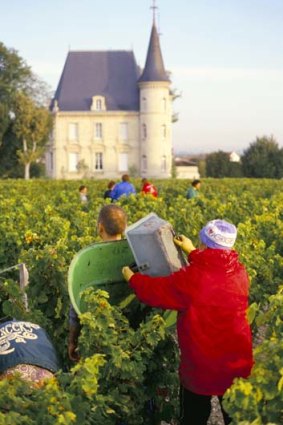
Vintage finds ... harvest at Chateau Pichon Longueville, Bordeaux.Credit: Getty Images
There are about 10,000 wine-producing chateaus scattered across Bordeaux's gently rolling hills, many of which open their doors to visitors wanting to taste the wine. I drive past several dozen on a day trip to Paulliac, where heavyweight first-growth wineries such as Chateau Latour and Chateau Lafite Rothschild are located. The latter is a 16th-century manor that attracts a steady stream of Chinese tourists. With such a pedigree, Paulliac has no shortage of top-notch places to eat but, after Lameul's extravagant spreads, I need something more casual and I'm told I'll find it in the village of Bages.
Tucked in a courtyard overlooking the newly refurbished village square, Cafe Lavinal draws most of its ingredients from nearby farms. I tuck into zesty goat's cheese and late-season tomatoes with tapenade, and succulent pork cheeks and mustard-hued spinach topped by flaky pastry. Even better, the cafe serves close to 100 wines from local producers, including the celebrated Chateaux Margaux and Chateau Saint-Emilion, with eight wines available by the glass.
Such laid-back locavore and nose-to-tail bistros are a dime a dozen in the city of Bordeaux. I'm told that the best is La Brasserie Bordelaise, a bustling diner serving mammoth portions of meat, such as beef carpaccio - unusually thick slices of raw cow served with a buttery mayonnaise - and roasted chicken stuffed with its liver and breadcrumbs. The food is a triumph. Lining the walls and filling boxes around us are hundreds of local wines.
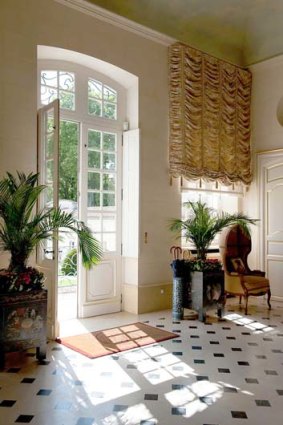
Chateau La Lagune in Haut-Medoc.Credit: Rama Knight
With so many wines and only so much time, choosing which ones to taste is the biggest problem facing oenophiles in Bordeaux. A solution is offered at Max Bordeaux, a stylish shop on the same street as La Brasserie Bordelaise, with 650 wine glasses dangling from the ceiling. Using an Enomatic vending machine, which keeps the wines at an ideal temperature and free from oxygenation and spoilage, the shop offers tastings of 48 grand cru vineyards from the area. Wine lovers buy a tasting card, choose a vintage, pop a glass under the spout and out comes the wine. It's a perfect way to save on leg work and compare top drops. An illustrious first-growth wine can be tasted without having to pay for a bottle; a sample glass of Chateau Lafite Rothschild, for example, costs €35, or €1100 for the bottle.
Bordeaux wine has come a long way since the Romans started production here in the 1st century. The industry received its first boost in the 12th century when the Duchess of Aquitaine married Henry Plantagenet, the future king of England; the nuptials officially converted the Aquitaine-Bordeaux region to English territory. King Henry, who was partial to a glass or two of red, had Bordeaux wine shipped to his palace. By the 14th century, half of the wine produced in Bordeaux was sent to England.
The Dutch eventually took over the wine export business and it's their original stone warehouses flanking the river bank in the city of Bordeaux that I explore on a walking tour. The warehouses sit among Rococo buildings, grand squares and mediaeval churches recently cleaned of centuries of grime and soot.
The renewal project, which helped Bordeaux obtain UNESCO World Heritage status in 2007, also reclaimed the old docklands and installed the Miroir d'eau - or water mirror - in its place. Every 15 minutes, this giant rectangle of black slate in front of the Place de la Bourse fills with two centimetres of water, reflecting the imposing 18th-century stock exchange and, for a fleeting moment, doubling its splendour.
Like Chateau La Lagune and Bordeaux's great wines, Miroir d'eau is a touch excessive - but fabulous, too.
Leisa Tyler travelled courtesy of Chateau La Lagune.
FAST FACTS
Getting there
Air France has a fare to Bordeaux from Sydney and Melbourne for about $2425 low-season return, including tax. Fly to Singapore on Qantas (about 8hr), then to Paris (13hr 40min), then to Bordeaux (75min); see airfrance.com. This fare allows you to fly via Hong Kong and back from another European city.
Staying there
Chateau La Lagune has six double rooms, from €650 ($755) a night, including breakfast; see chateau-lalagune.com.
Eating there
Chateau La Lagune serves private three-course dinners with matching wines from €95 a person. Bookings are necessary.
Cafe Lavinal, Place Desquet, Bages, serves two-course lunches from €14. Phone +33 55 775 0009.
La Brasserie Bordelaise, 50 rue Saint Remi, Bordeaux, serves mains from €17. Phone +33 55 787 1191.
Touring there
Chateau La Lagune has winery and cellar tours with tastings for €7 a person. Open Monday to Friday by appointment only; see chateau-lalagune.com.
Max Bordeaux is at 14 Cours de l'Intendance; see maxbordeaux.com.
Bordeaux Tourism has two-hour city walking tours; see bordeaux-tourisme.com.
Sign up for the Traveller Deals newsletter
Get exclusive travel deals delivered straight to your inbox. Sign up now.
